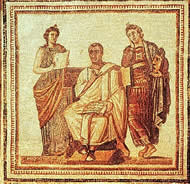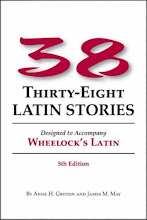
The original Roman calendar was chaotic. It included 10 months and 304 days in a year that started with March. Two more months, January and February, were added later that century. Because these months were only 29 or 30 days long, an extra month had to be added about every second year. The days of the month had an awkward method of counting backward from three days: the calends (1st of the month), the ides (the middle of the month, occurring on the 13th sometimes and on the 15th the other times), and the nones (the ninth day before the ides). This was then even more hopelessly confused when officials abused their authority to prolong their terms in office or to hasten or delay elections. In 45 BC, Julius Caesar was advised by the Greek astronomer Sosigenes to use a solar calendar. This calendar became known as the Julian Calendar and fixed the year with 365 days and 366 days every 4th year. This was called a leap year. This order was established as it is known in everyday calendars. In 44 BC Caesar changes the name of the month Quintilis to Julius(July)after himself. Then the month Sextilis was renamed after the Roman Emperor Caesar Augustus (August). The Romans named the days of the week in honor of the sun, moon, and various planets.







